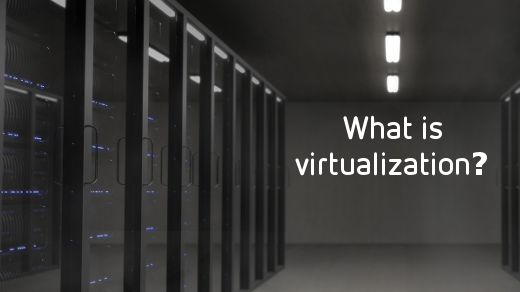
Opensource.com
Virtualization is the process of running a virtual instance of a computer system in a layer abstracted from the actual hardware. Most commonly, it refers to running multiple operating systems on a computer system simultaneously. To the applications running on top of the virtualized machine, it can appear as if they are on their own dedicated machine, where the operating system, libraries, and other programs are unique to the guest virtualized system and unconnected to the host operating system which sits below it.
There are many reasons why people utilize virtualization in computing. To desktop users, the most common use is to be able to run applications meant for a different operating system without having to switch computers or reboot into a different system. For administrators of servers, virtualization also offers the ability to run different operating systems, but perhaps, more importantly, it offers a way to segment a large system into many smaller parts, allowing the server to be used more efficiently by a number of different users or applications with different needs. It also allows for isolation, keeping programs running inside of a virtual machine safe from the processes taking place in another virtual machine on the same host.
What is a hypervisor?
A hypervisor is a program for creating and running virtual machines. Hypervisors have traditionally been split into two classes: type one, or "bare metal" hypervisors that run guest virtual machines directly on a system's hardware, essentially behaving as an operating system. Type two, or "hosted" hypervisors behave more like traditional applications that can be started and stopped like a normal program. In modern systems, this split is less prevalent, particularly with systems like KVM. KVM, short for kernel-based virtual machine, is a part of the Linux kernel that can run virtual machines directly, although you can still use a system running KVM virtual machines as a normal computer itself.
What is a virtual machine?
A virtual machine is the emulated equivalent of a computer system that runs on top of another system. Virtual machines may have access to any number of resources: computing power, through hardware-assisted but limited access to the host machine's CPU and memory; one or more physical or virtual disk devices for storage; a virtual or real network inferface; as well as any devices such as video cards, USB devices, or other hardware that are shared with the virtual machine. If the virtual machine is stored on a virtual disk, this is often referred to as a disk image. A disk image may contain the files for a virtual machine to boot, or, it can contain any other specific storage needs.
What is the difference between a container and a virtual machine?
You may have heard of Linux containers, which are conceptually similar to virtual machines, but function somewhat differently. While both containers and virtual machines allow for running applications in an isolated environment, allowing you to stack many onto the same machine as if they are separate computers, containers are not full, independent machines. A container is actually just an isolated process that shared the same Linux kernel as the host operating system, as well as the libraries and other files needed for the execution of the program running inside of the container, often with a network interface such that the container can be exposed to the world in the same way as a virtual machine. Typically, containers are designed to run a single program, as opposed to emulating a full multi-purpose server.
Where can I learn more?
Want to learn how you can get started with virtualization? We've got plenty of resources for you. Be sure to check out our virtualization tag set, or take a look at one of these great articles.
-
Using Vagrant and Ansible to deploy virtual machines for web development by Betsy Gamrat.
-
Vagrant in 5 minutes, a lightning talk by Daniel Farrell.
-
Why tools like Docker, Vagrant, and Ansible are hotter than ever by Greg DeKoenigsberg.

